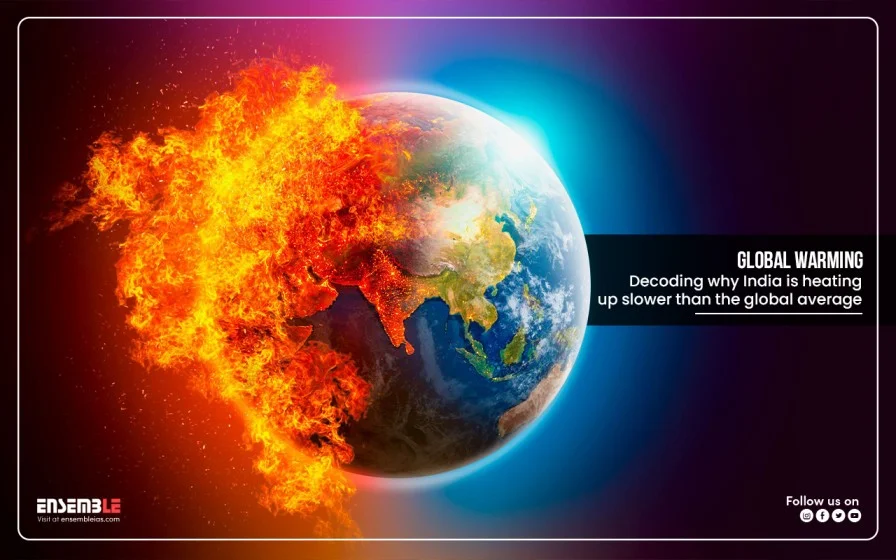Global warming is a critical issue affecting our planet, with the average global temperature rising by 1.1 degree Celsius since the 1850-1900 period. However, this temperature increase is not uniform across regions and seasons. In the case of India, the rise in temperatures has been relatively slower compared to the global average.
Regional Temperature Variations:
It is important to understand that global temperature increase is an average calculated from multiple layers of data. While land temperatures have risen by as much as 1.59 degrees Celsius since preindustrial times, ocean temperatures have increased by about 0.88 degrees Celsius. However, the warming trends observed in the Indian region present a different scenario. According to the Ministry of Earth ScSciences020 assessment on climate change, India has experienced an annual mean temperature rise of 0.7 degrees Celsius since 1900, which is significantly lower than the global land temperature increase.
Factors Contributing to Global Warming in India:
Geographical Location:
India’s location in the tropical region, closer to the equator, plays a significant role in its slower warming rate. Higher latitudes, particularly near the polar regions, experience more prominent temperature increases. This is due to complex atmospheric phenomena, including heat transfers from the tropics to the poles through prevailing air circulation systems. As India is situated in a tropical region, it experiences comparatively lower temperature rise.
Regional Differences in Temperature Increase:
The variation in temperature rise between India and the global average can be explained by understanding the different numbers involved.
- While the global average temperature has increased by 1.1 degrees Celsius, specific regions have experienced significantly different levels of warming. For instance, the polar regions, especially the Arctic, have witnessed much greater temperature increases.
- The Arctic’s annual mean temperatures are currently about 2 degrees Celsius higher than pre-industrial times, indicating at least twice the global average warming rate.
Factors Impacting Arctic Warming:
The Arctic’s accelerated warming is influenced by various factors, including the albedo effect, which relates to the reflectivity of surfaces. The melting of ice in the Arctic exposes more land and water to sunlight. Compared to land or water, ice reflects most of the solar radiation and traps the least amount of heat. Recent research indicates that the higher warming in the polar region can be attributed to multiple factors, such as changes in clouds, water vapor, atmospheric temperatures, and the albedo effect.
Positive Side-Effect for India:
India’s relatively slower temperature rise is a positive consequence of its tropical location. As stated by Bala Govindasamy, a professor at the Centre for Atmospheric and Oceanic Sciences at the Indian Institute of Science in Bengaluru, higher latitudes naturally experience greater warming. Since most of the global landmass is concentrated in the northern latitudes, which are prone to faster and more pronounced heating, the average warming over global land areas becomes more significant. Given India’s location in the tropics, the deviation in temperature rise from the global average is not unexpected.
Insights on Temperature Patterns in India:
Interestingly, while maximum temperatures in India have shown a significant increase since 1900, the rise in minimum temperatures has been relatively minimal. Consequently, the annual mean temperature rise in India can be attributed mainly to increases observed in maximum temperatures. The exact reasons behind this disparity are not yet well understood. Climate systems operate at a global level, and attempting to model them on regional scales introduces uncertainties and complexities.
Conclusion
While the maximum temperatures over India have shown a significant increase since 1900, the rise in minimum temperatures has not been much. The rise in annual mean temperatures, therefore, has been mainly due to the increases seen in the maximum temperatures. India’s slower temperature rise compared to the global average should not undermine the urgency of addressing climate change.





